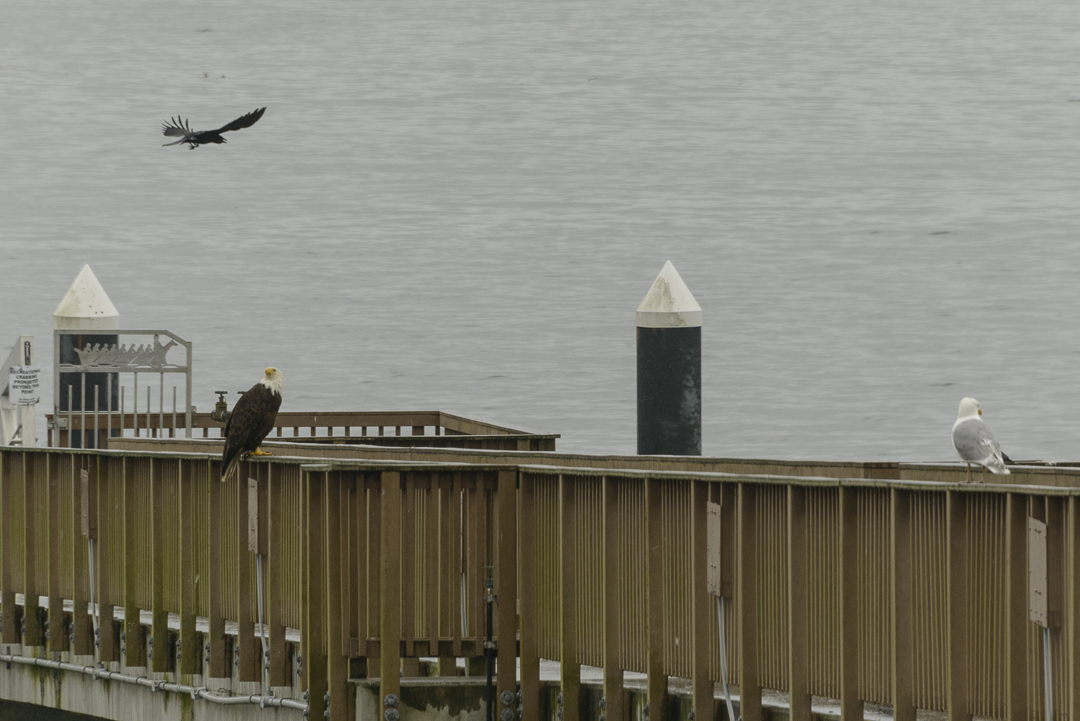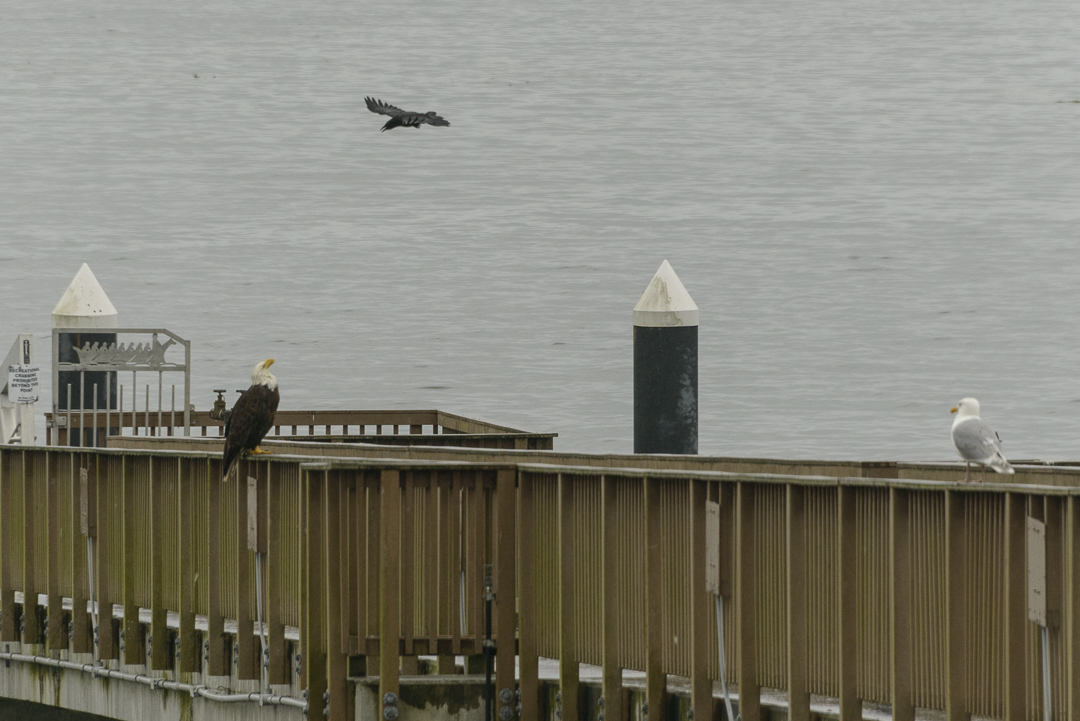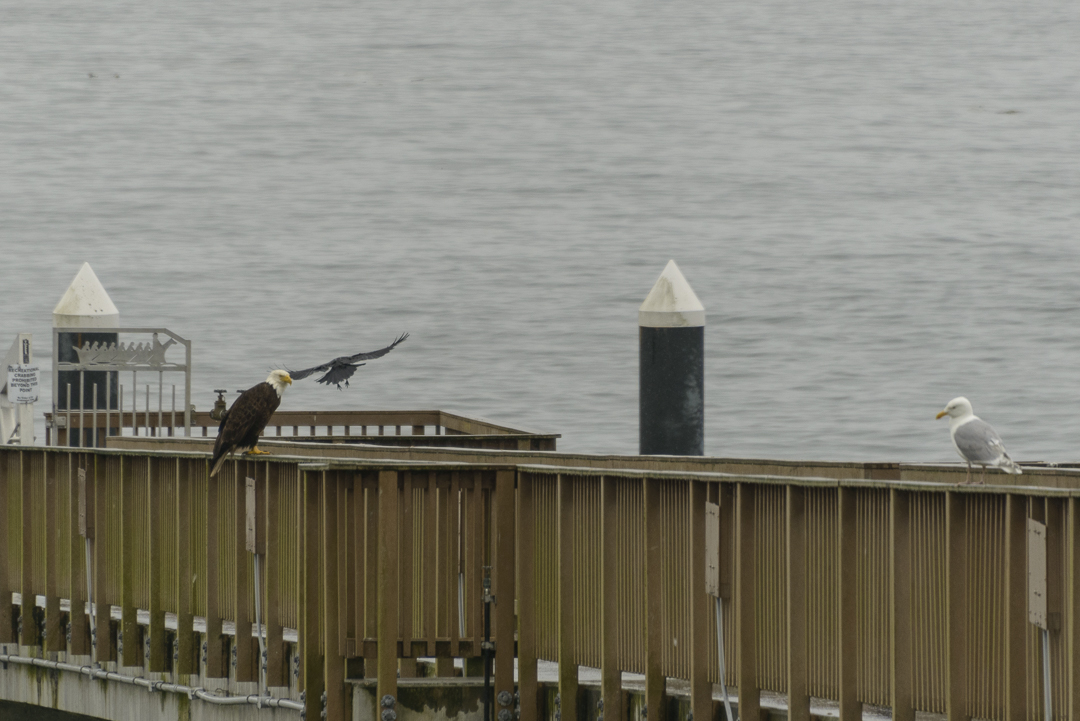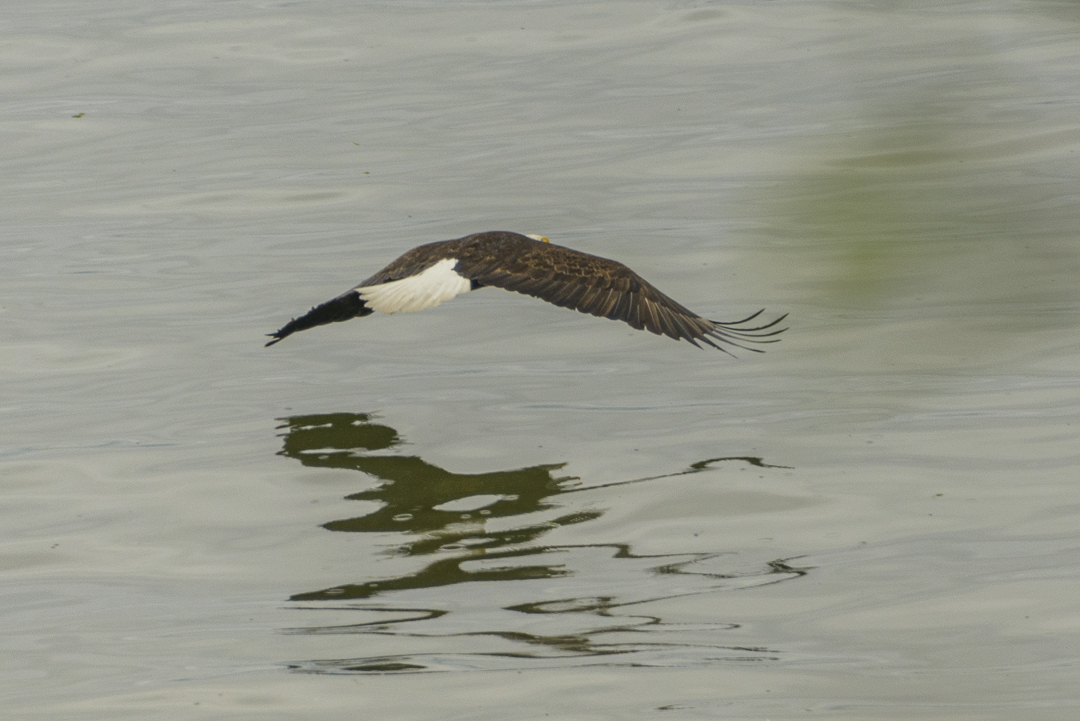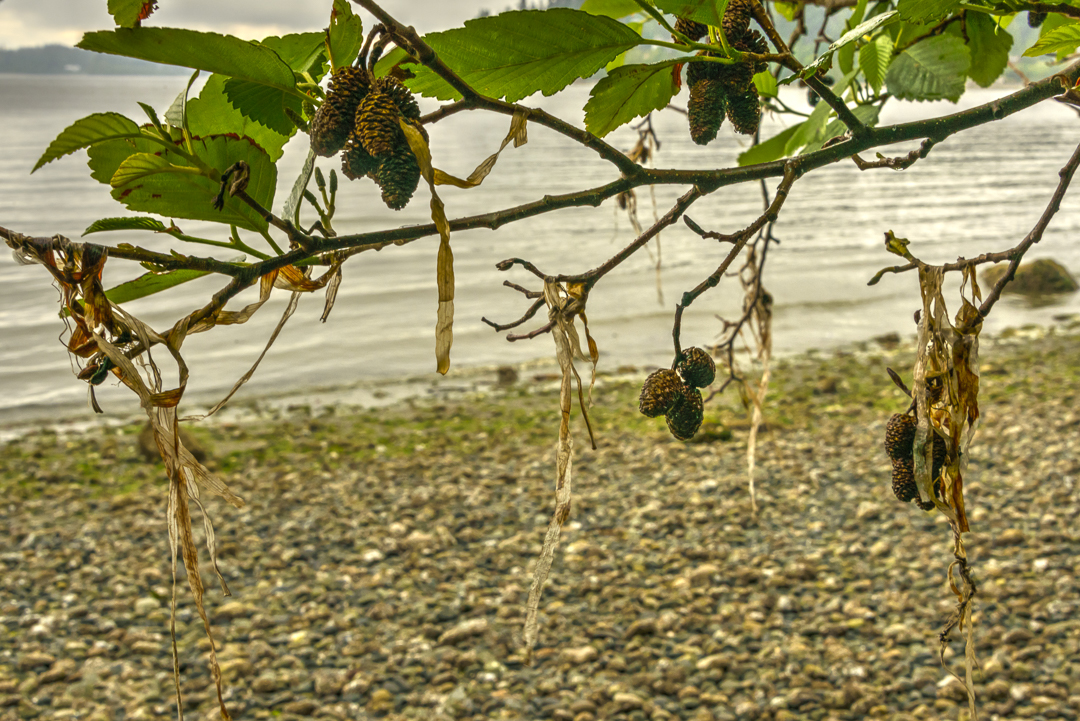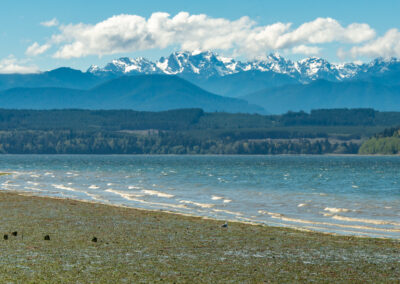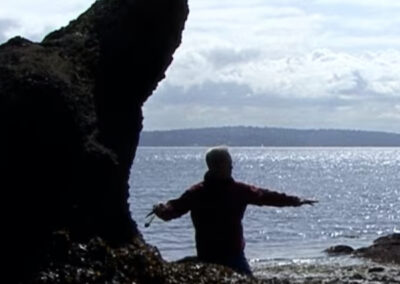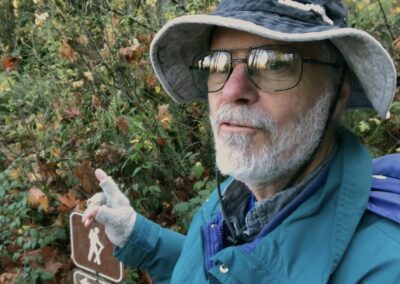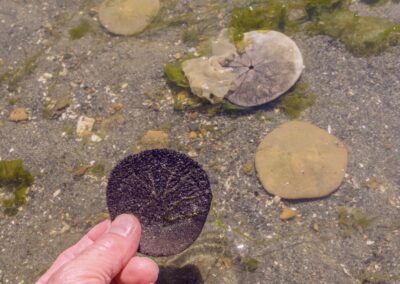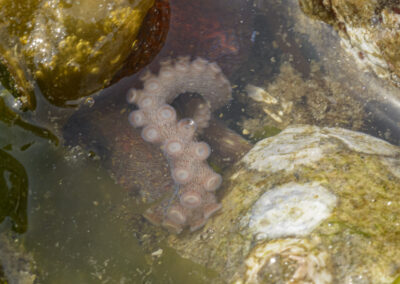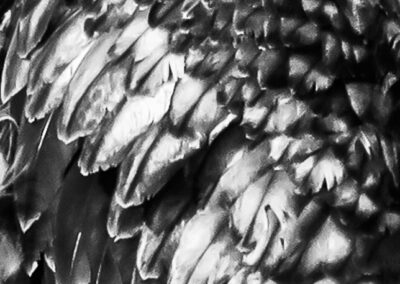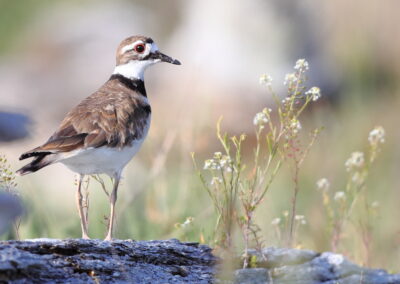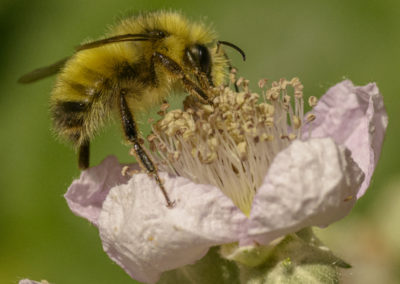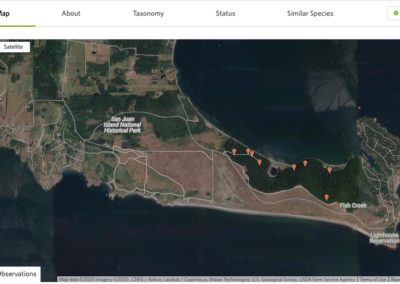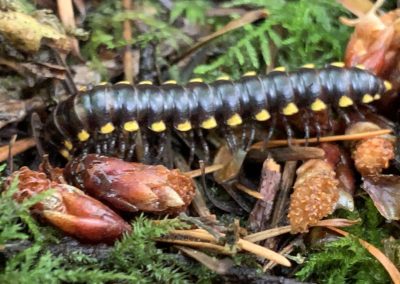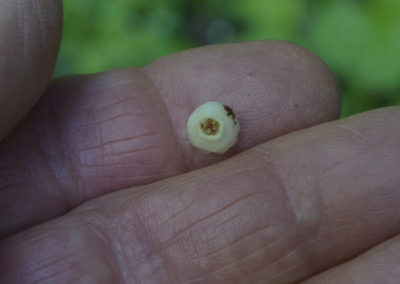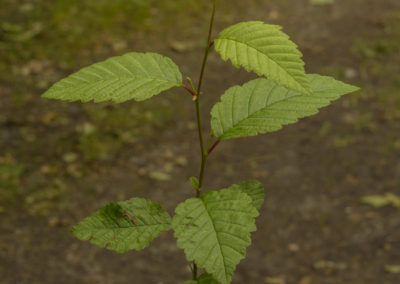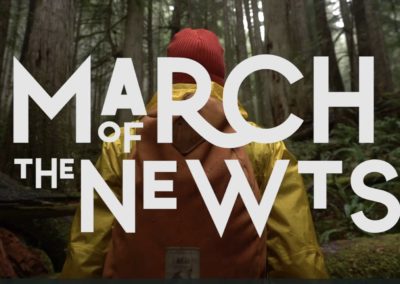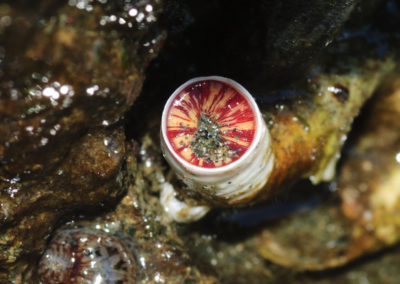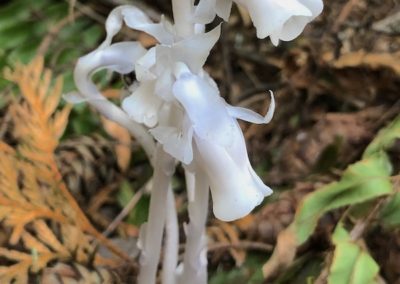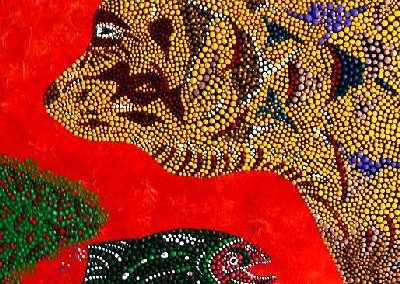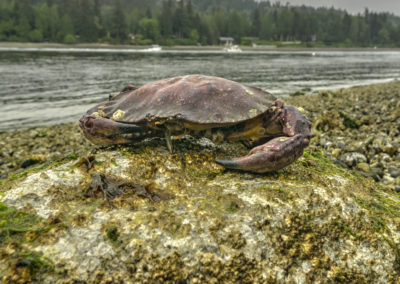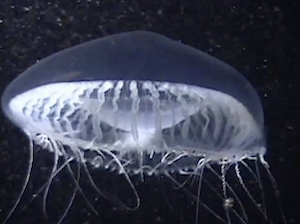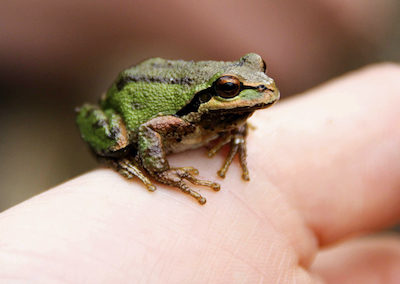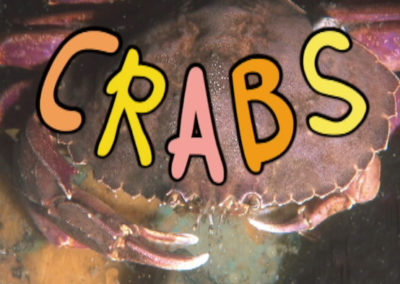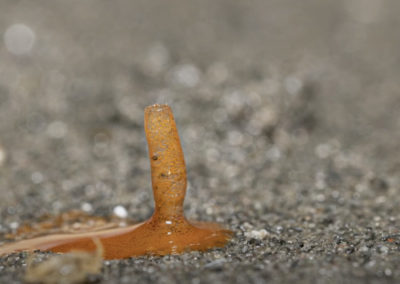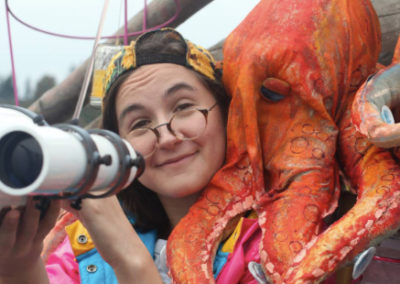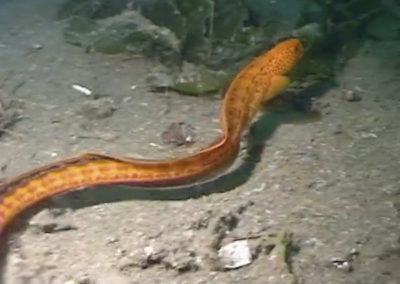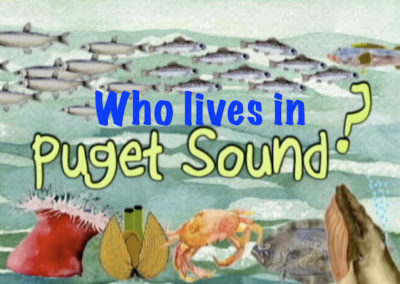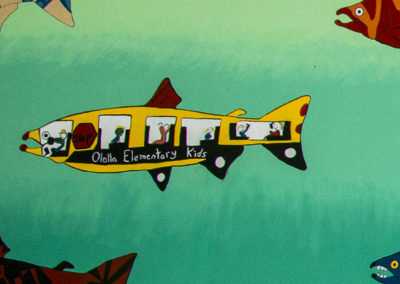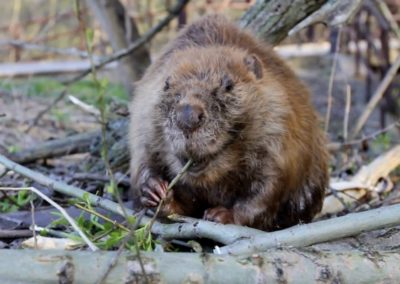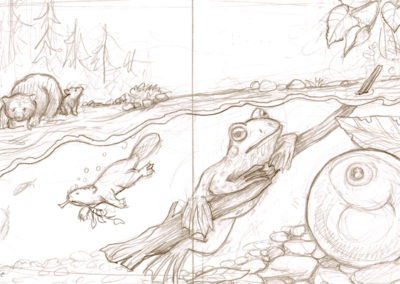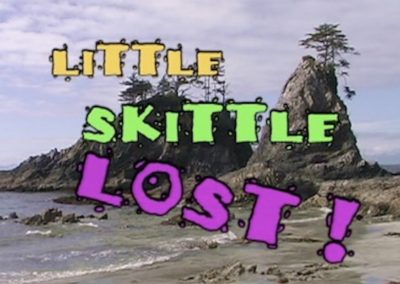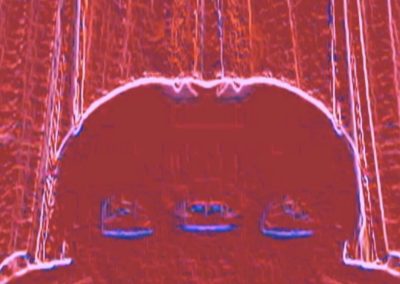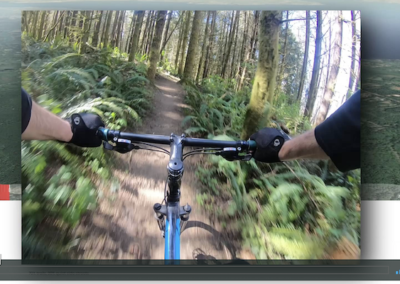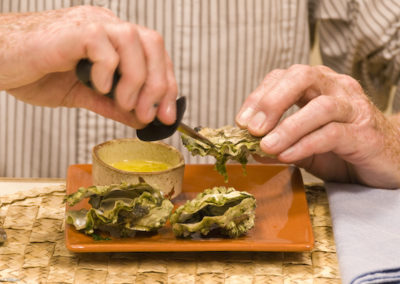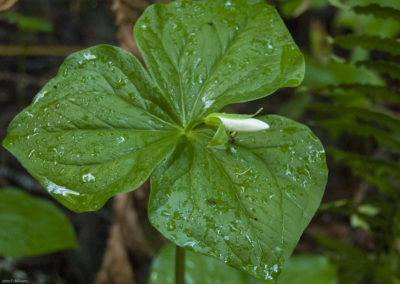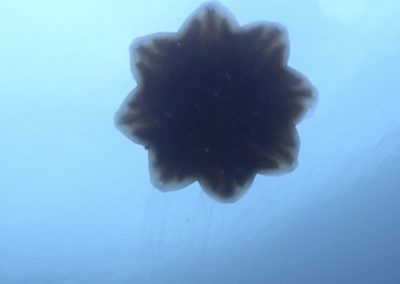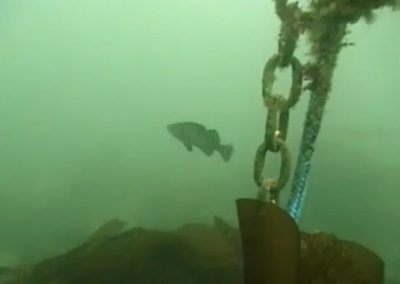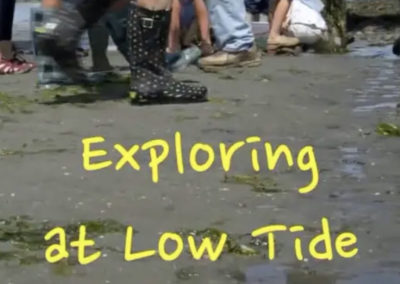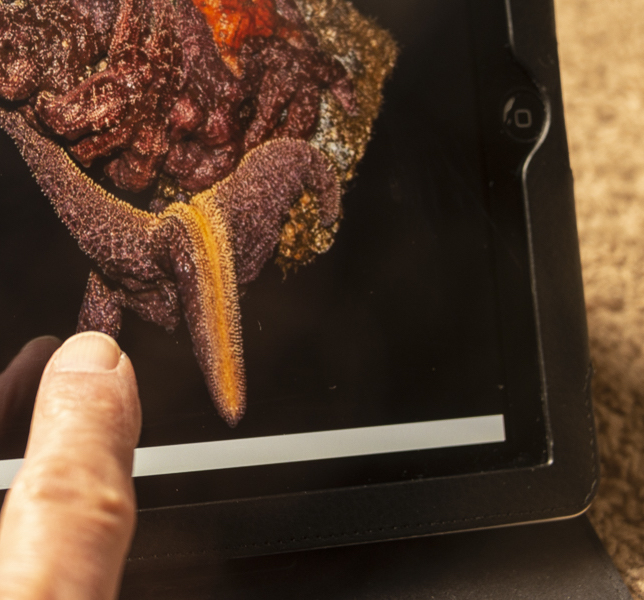
LOW TIDE: May 25, 2020
by John F. Williams
Our previous Virtual Exploration asked, “Have you been down to the beach at low tide yet this year?”
Today I took my camera down to the beach at low tide, and I was rewarded with the opportunity to capture some great sights. Some of the best ones are shown below.
There were some light rain showers while I was on the beach, and while it was raining I saw zero other people at the beach. Between showers, I saw only 3 people per hour, and it was very easy to keep lots of distance between us.
Use the arrows over the photos to scroll through the whole set.
Before I even got to the beach, I was entertained by a crow harassing a bald eagle.
After a while, the eagle flew down to the beach and found some sort of treat to munch on. However, that didn’t stop the crow.
Finally, the eagle got fed up and flew away.
But I did get down to the beach, and the tide was WAY out…about -2 feet.
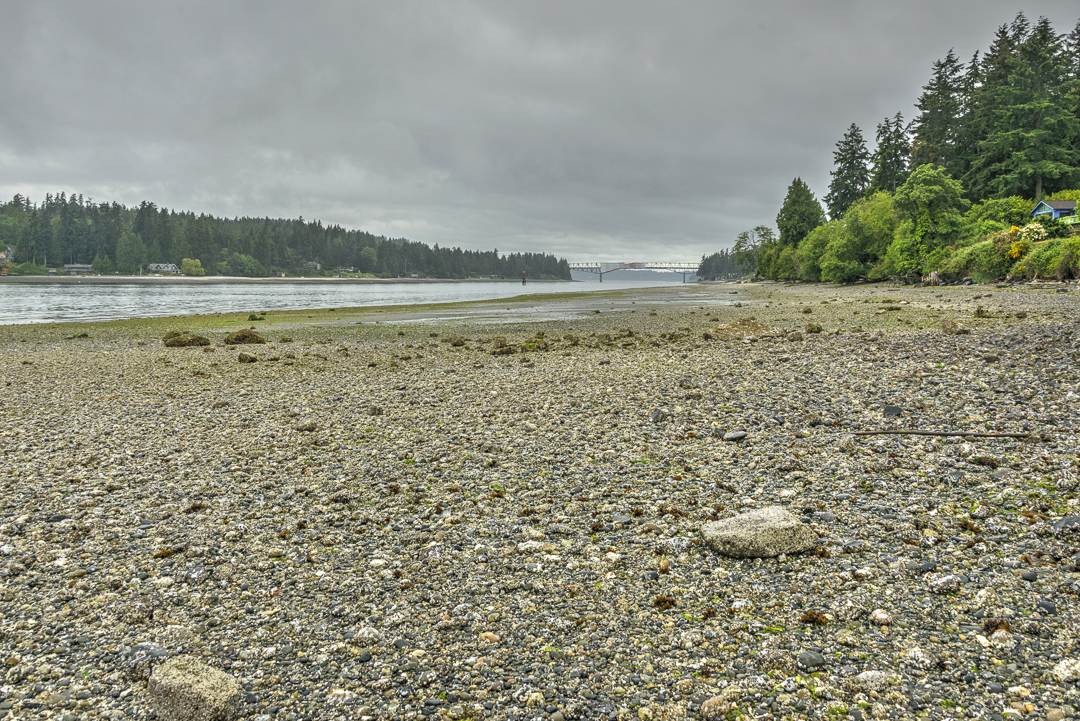

I wasn’t surprised to find feathers on the beach.
There were various kinds of kelp as well. This one’s holdfast seems to not have held very fast.
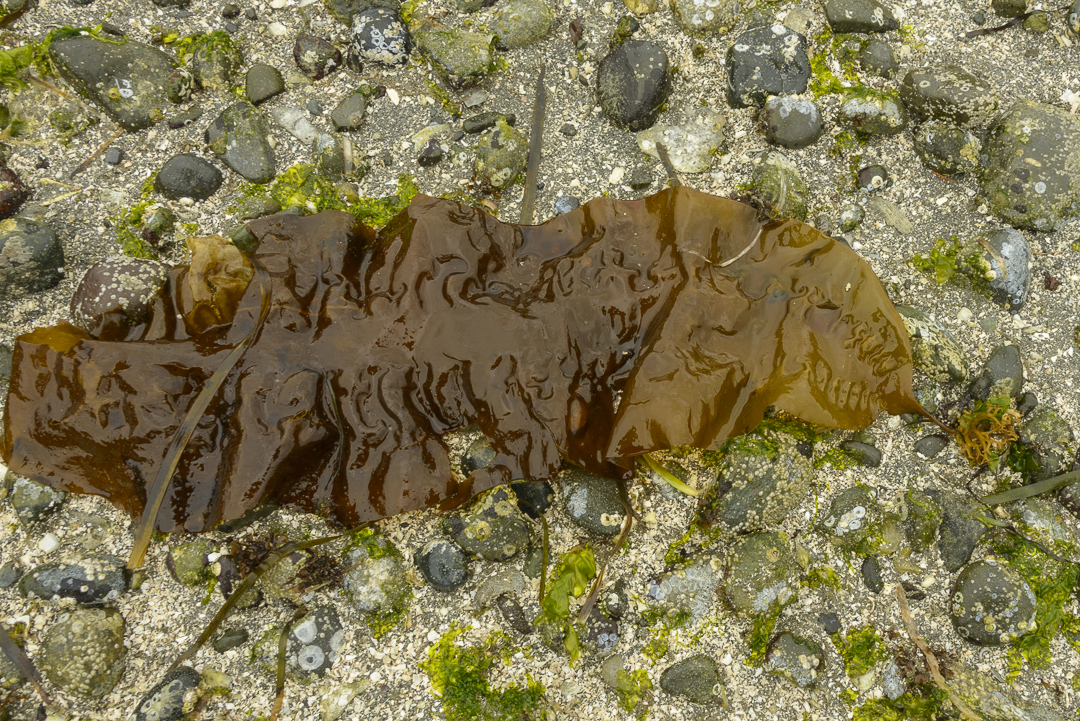
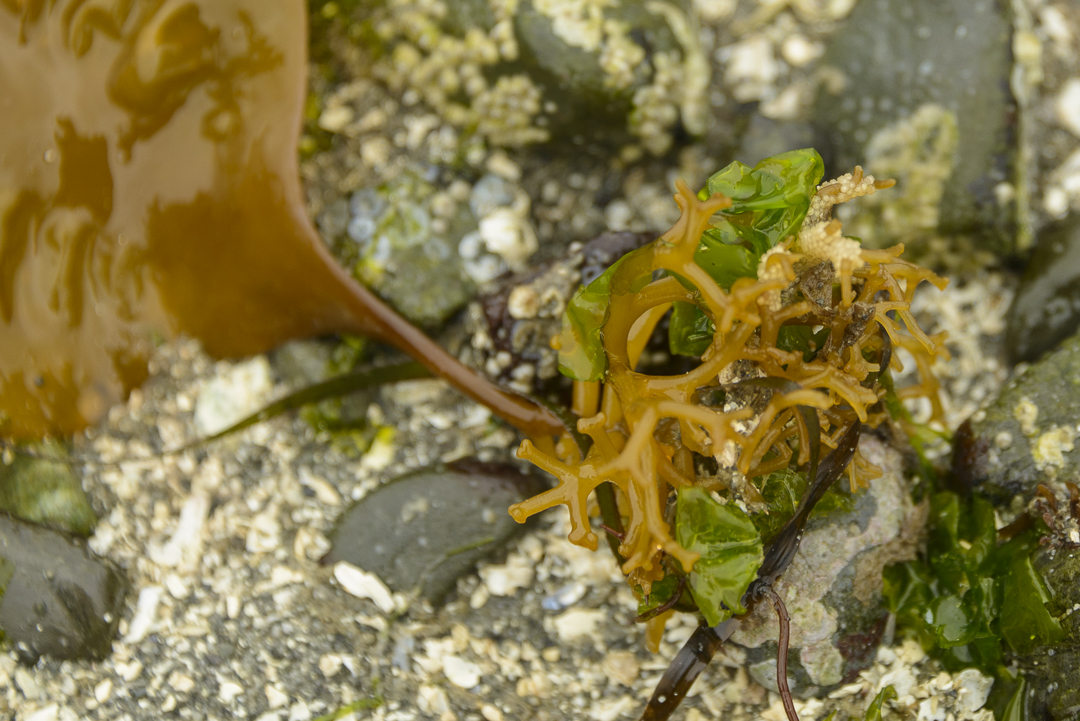
There were quite a few young sea stars.

And quite a few crab shells, there must have been a lot of molting going on.

There were also lots of aggregating anemones…
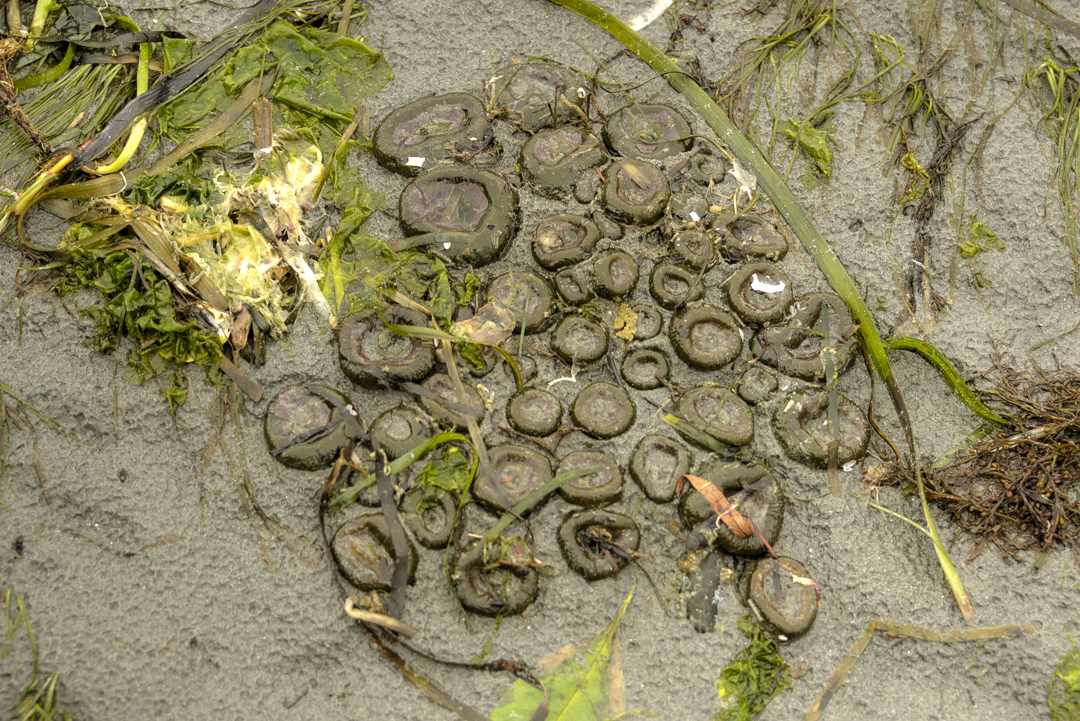
But what really blew my mind was that as I was standing fairly high up on the beach, I saw some living Alder branches with drying eelgrass hanging from them. They were at eye-level.
That means that the high tide must have reached up to about where the top of my head was!
I know, intellectually, that the tidal range around here is 15 feet or more.
But actually seeing that evidence of it really created a gut-level understanding.
See More virtual tours
SOME OTHER ESPECIALLY INTERESTING RESOURCES
Science and Nature
This series of short videos, "Human Elements, Science and Nature," is on our local PBS station (KCTS9) as well as online. It features some great local science stories and amazing imagery.
https://www.kcts9.org/show/human-elements/episodes
Future Ecologies
I was thrilled when I discovered the “Future Ecologies” podcast because it has an uncanny resemblance to what we set out to do with Salish Magazine (except that it’s audio rather than visual).
It is one of the few media efforts which really embraces the ecosystem perspective. Use this link to take a look at the review of Future Ecologies on our SEA-Media web site.
The Marine Detective
Jackie Hildering invites you to her blog: "Join me in the cold, dark, life-sustaining NE Pacific Ocean to discover the great beauty, mystery and fragility hidden there." But even before you get to the blog, on her home page there is a slideshow of absolutely stunning photographs.
Street Smart Naturalist
Street Smart Naturalist: Explorations of the Urban Kind is a weekly blog written by David B. Williams to share observations about the human and natural world around Seattle, Puget Sound, and the Pacific Northwest.
Are you in the target audience?
- People who want to know more about Seattle and Puget Sound and the many fascinating stories that can be found by wandering the streets, deep diving newspaper archives, perusing old photos, and taking the time to slow down, be more observant, and ask questions;
- Urban naturalists who delight in noticing fossils in buildings, walruses in terra cotta, and ants bubbling out of sidewalk cracks;
- Flaneurs, historians, optimists, and the just plain nerdy;
- And, those who simply look around and find beauty and amazement in the world around them.
Encyclopedia of Puget Sound
The Encyclopedia of Puget Sound is a comprehensive guide to the science of Salish Sea ecosystem recovery. Articles on this site describe the region's major environmental threats and areas of concern, but also the facts and stories that make the Salish Sea an estuary of international importance. The website is a product of the University of Washington Puget Sound Institute and receives major support from the Environmental Protection Agency's National Estuary Program.
Hakai Magazine
Hakai Magazine explores science, society, and the environment from a coastal perspective. Not only is its content instructive, but it's presentation is visually inspiring.
Living on Earth
Public Radio's Environmental News Magazine. If you're looking for some substance beyond the normal focus of our media on sports, politics, fashion, and economy, listen to this show which does a great job of portraying earth ecosystems as something essential to our lives. The stories it tells are compelling.
IslandWood's Phenology Friday
For 12 weeks in 2020, one of IslandWood’s educators shared a phenological highlight. Watch the videos of their explorations.
Pacific Wonder Tracker
Pacific Wonder Tracker celebrates the delicious sense of wonder we experience when exposed to the natural environment. It is also specific to the natural wonders of the Pacific Northwest. Whether you live here, plan to visit, or just have a curious mental itch, you can enjoy reading about wonders you may encounter in coastal Washington and Oregon.
"Scientists on the Go" from WET Science Center
WET Science Center's "Scientists on the Go" activities integrate science into a child's day while incorporating reading, writing, and math skills! There are a combination of indoor and outdoor activities to keep the learner curious and asking questions. Check back regularly for updated science activities and new printable activity packets. Recommended for elementary age children.
Remote Science Learning
Use this guide to find science resources to supplement remote learning. Thurston County environmental organizations have developed activities for all ages. This resource is provided by the Thurston County ECO Network.
Deep Look
This collection of short videos by PBS shows the unseen at the very edge of our visible world. Get a new perspective on our place in the universe and meet extraordinary new friends. Explore big scientific mysteries by going incredibly small.
PLEASE HELP SUPPORT
SALISH MAGAZINE
DONATE
Salish Magazine contains no advertising and is free. Your donation is one big way you can help us inspire people with stories about things that they can see outdoors in our Salish Sea region.
We also don't advertise Salish Magazine, so please spread the word of this online resource to your friends and colleagues.
Thanks so much for your interest and your support.
We also don't advertise Salish Magazine, so please spread the word of this online resource to your friends and colleagues.
Thanks so much for your interest and your support.



